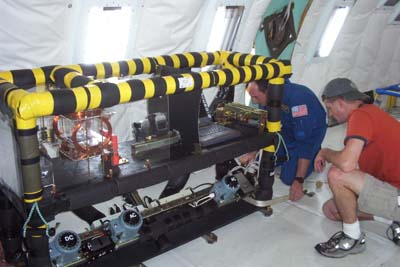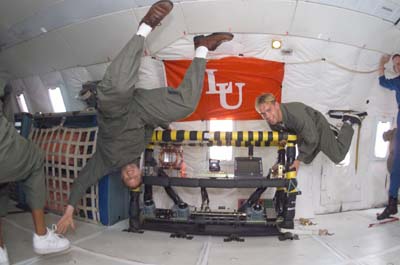Minor in Space Science
The space science course curriculum compliments the geosciences, other science and engineering programs and many non-science and engineering disciplines.
The space science course curriculum in combination with related Bachelor of Science degrees is intended to provide you with unique strengths that further enable achievement of success as professionals at NASA centers, other related government agencies, aerospace contractors, as well as K-12 teaching.
Requirements
The program requires 21 hours, a minimum of nine of which must be in upper-division courses.
Current Requirements for Minor in Space Sciences
Select three of the following:
- PHYS 1401 College Physics I
- PHYS 1402 College Physics II
- PHYS 2425 University Physics I
- PHYS 2426 University Physics II
- PHYS 1411 Intro Astronomy
- SPSC 1401 Space Science
Select three of the following:
- SPSC 3301 Microgravity
- SPSC 3302 Space Transportation Systems
- SPSC 4301 Special Topics/Space Science
- GEOL 4330 Geophysics
- GEOL 4361 Geochemistry
- GEOL 4390 Rocks and Stars
- GEOL 4314 Fundamentals of Remote Sensing (currently accepted as substitution)
Previous Requirements for Minor in Space Sciences
Minor in Space Science (21 credit hours required, no grade less than “C”) Must have taken at least three (12 hours) of the following required lower division courses: PHYS 1406, 1407 General, PHYS 2425, 2426 Calculus-based, PHYS 1411 Astronomy, SPSC 1401 Space Science.
Upper division courses (9 hours): SPSC 3301 Microgravity, SPSC 3302 Space Transportation Systems, SPSC 3303 Orbital & Celestial Mechanics, SPSC 4302 Space Vacuum Physics, SPSC 4303 Planetary Materials, SPSC 4301 Special Topics in Space Science, GEOL 4330 Geophysics, GEOL 4361 Geochemistry, GEOL 4390 Rocks and Stars.
About the Program
The Space Science Minor program is designed to compliment a wide variety of majors and disciplines by providing courses that emphasize space science, engineering and technology. Those seeking careers in aerospace and space science are encouraged to consider a minor in space science because the courses are taught by faculty who are actively involved in research at NASA Centers and associated industries. Through undergraduate research opportunities, you can be directly involved with the faculty research.

Students inspect their experimental equipment used in NASA's Reduced Gravity Student Flight Opportunity Program.
About the Faculty
In addition to Lamar University faculty, the program also has space scientists and engineers who are employed at Johnson Space Center, or with surrounding aerospace contractors and teach as adjunct instructors for the Space Science Minor program.
Outside the Classroom
If enrolled in Space Science courses, you may participate in a number of programs sponsored by NASA, Texas Space Grant and the American Institute of Aeronautics and Astronautics.

Lamar University students participate in NASA's Reduced Gravity Student Flight Opportunity Program on board NASA's KC-135, "The Weightless Wonder."
Email us at jslack@lamar.edu or krugerjm@lamar.edu for more information!
Course Descriptions
Space Science (SPSC)
|
Course Number: 3301
Credit Hours: 3 Title: Microgravity Course Description: A study of physical, chemical, and biological phenomena under the conditions of reduced gravity. |
|
Course Number: 3302
Credit Hours: 3 Title: Space Transportation Systems Course Description: Introduction to space transportation systems and their payloads. |
|
Course Number: 3303
Credit Hours: 3 Title: Orbital/Celest Mechanics Course Description: The mechanics of the movement of bodies in space under the influence of gravity. |
|
Course Number: 4301
Credit Hours: 3 Title: Special Topics/Space Science Course Description: An individual library or laboratory project in conference with faculty. With permission of the department chair, student may repeat the course for credit when the area of the study is different. |
|
Course Number: 4302
Credit Hours: 3 Title: Space Vacuum Physics Course Description: The physics of vacuum as applied to phenomena in space. Introduction to production and measurement of vacuum in laboratories on Earth. |
|
Course Number: 4303
Credit Hours: 3 Title: Planetary Materials Course Description: A study of the chemistry and mineralogy of extraterrestrial materials including moon samples and meteorites. Introduction to the laboratory techniques used to examine these materials. |